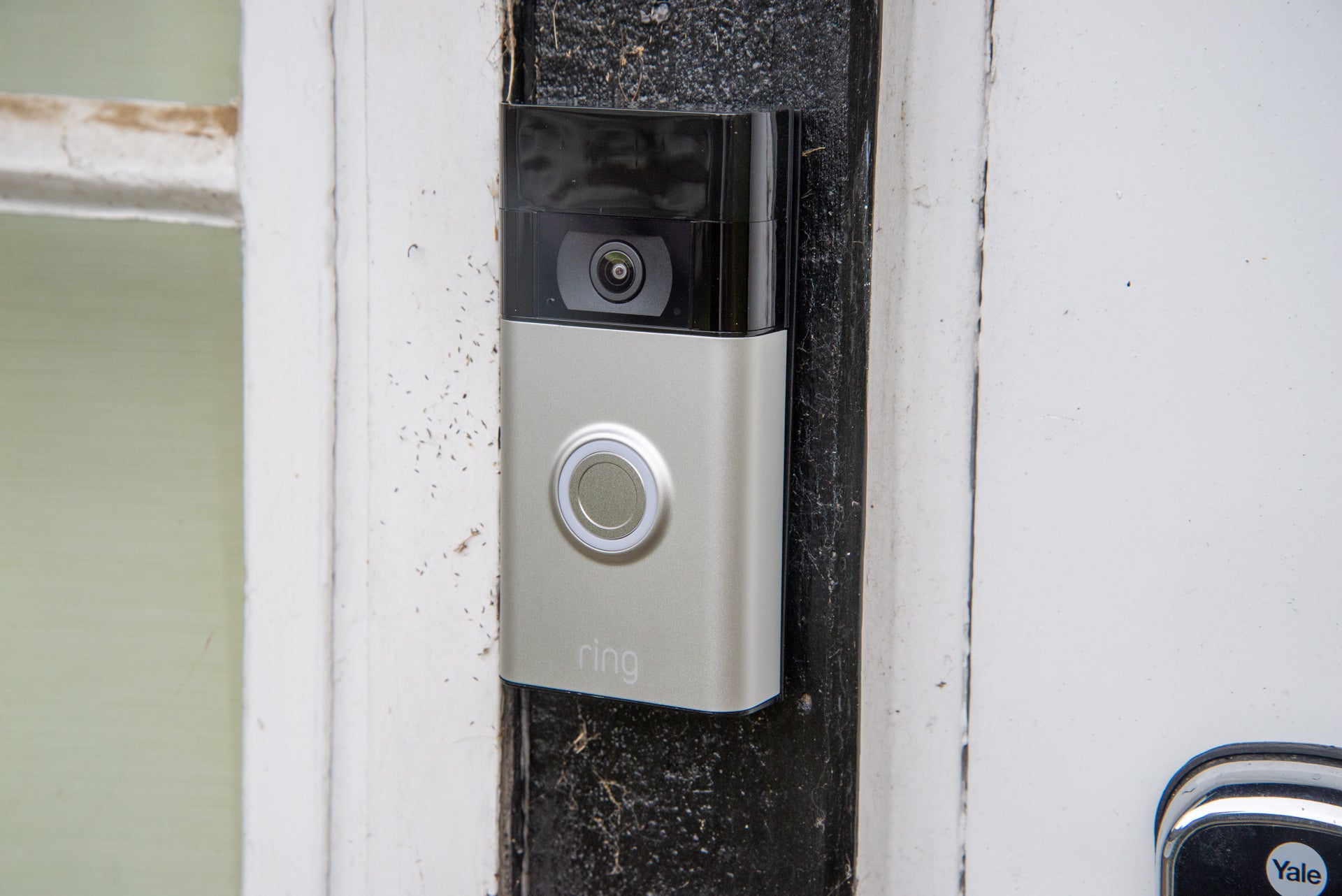Verdict
It doesn’t have the best video quality, particularly at night when everything starts to look quite soft. However, the Ring Video Doorbell 2nd Gen works brilliantly for dealing with callers and it integrates fully with Alexa and other Ring devices. If you just want a smart doorbell, so you can answer your doorbell from anywhere, the low price here makes this product hard to argue against.
Pros
- Great value
- Integrates with other Ring products
- Gets the basics right
-
TypeThis is a smart video doorbell with an integrated battery. -
Battery lifeAround six to 12 months on a charge, depending on how many notifications are triggered and how many people press the bell.
Introduction
The cheapest battery-powered doorbell in the line-up, the Ring Video Doorbell 2nd Gen is a great entry-level choice.
It sacrifices some of the main features of its more expensive siblings, including a removable battery pack, and video quality isn’t the best. For those on a budget, these are all reasonable sacrifices.
Design and installation
- No wedges in the box
- Fatter than the normal doorbells
- Works with a transformer and wired chimes
This battery-powered doorbell is a little different from the other Ring ones I’ve reviewed, such as the Ring Video Doorbell 4. While all of Ring’s previous models have used the Quick Release Battery Pack, the Ring Video Doorbell 2nd Gen uses an integrated battery.
That makes this doorbell a little wider than the other models and means that it has to be removed to be charged. That’s probably not much of an issue, as most people with a Quick Release compatible doorbell will only have one battery. In effect, in both circumstances the doorbell is out of action while charging.
The wider design may be cause for more concern, as the Ring Video Doorbell 2nd Gen may not fit as easily on a doorframe. There are no corner wedges in the box to make fitting easier, although these are available as extras.
Installation is straightforward. At its easiest, the doorbell can be charged, connected to Wi-Fi and then attached to the mounting bracket.
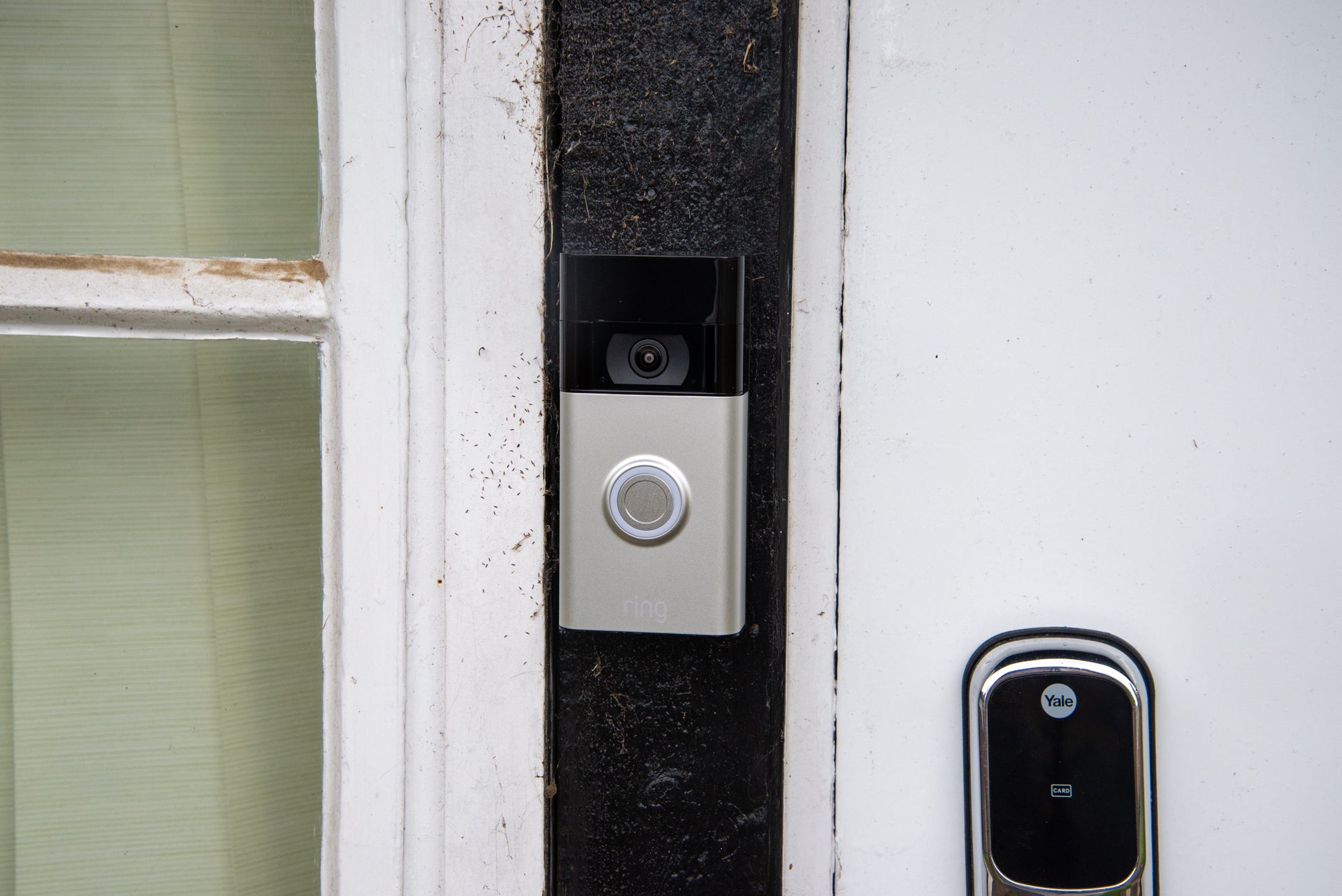
If you’ve already got a wired doorbell, then this model can be connected to the existing wires (8-24V transformers are supported).
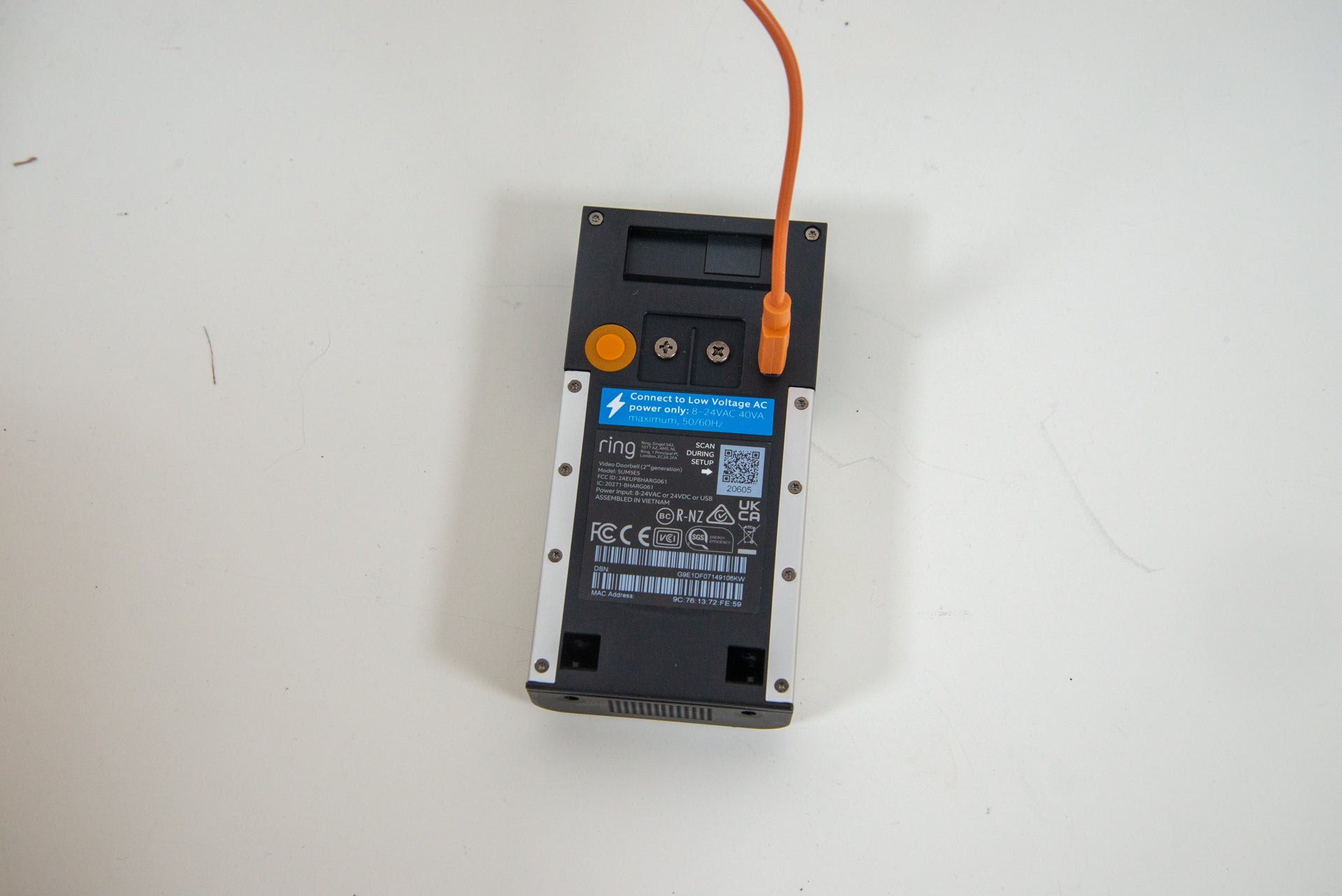
There are two clear advantages to doing this. First, the doorbell’s battery is trickle charged, so you shouldn’t have to remove it. Secondly, if you’ve got a wired chime inside, the Ring doorbell will ring it. This is an increasingly rare feature with Ring doorbells, with many of the new generation not supporting wired chimes.
Features
- Integrates with Alexa
- People-only detection
- Basic motion control
As with all of Ring’s other devices, the Ring Video Doorbell 2nd Gen connects via the Ring app. If you don’t have a Ring Protect system, you’ll get alerts and can answer the doorbell, but video won’t be recorded.
To record video, you need to subscribe to Ring Protect. It’s worth doing, getting you a minimum of 30-days’ video history stored in the cloud. Plus, there’s the added advantage of smart detection, with the cloud service able to detect and warn you when a person is detected.
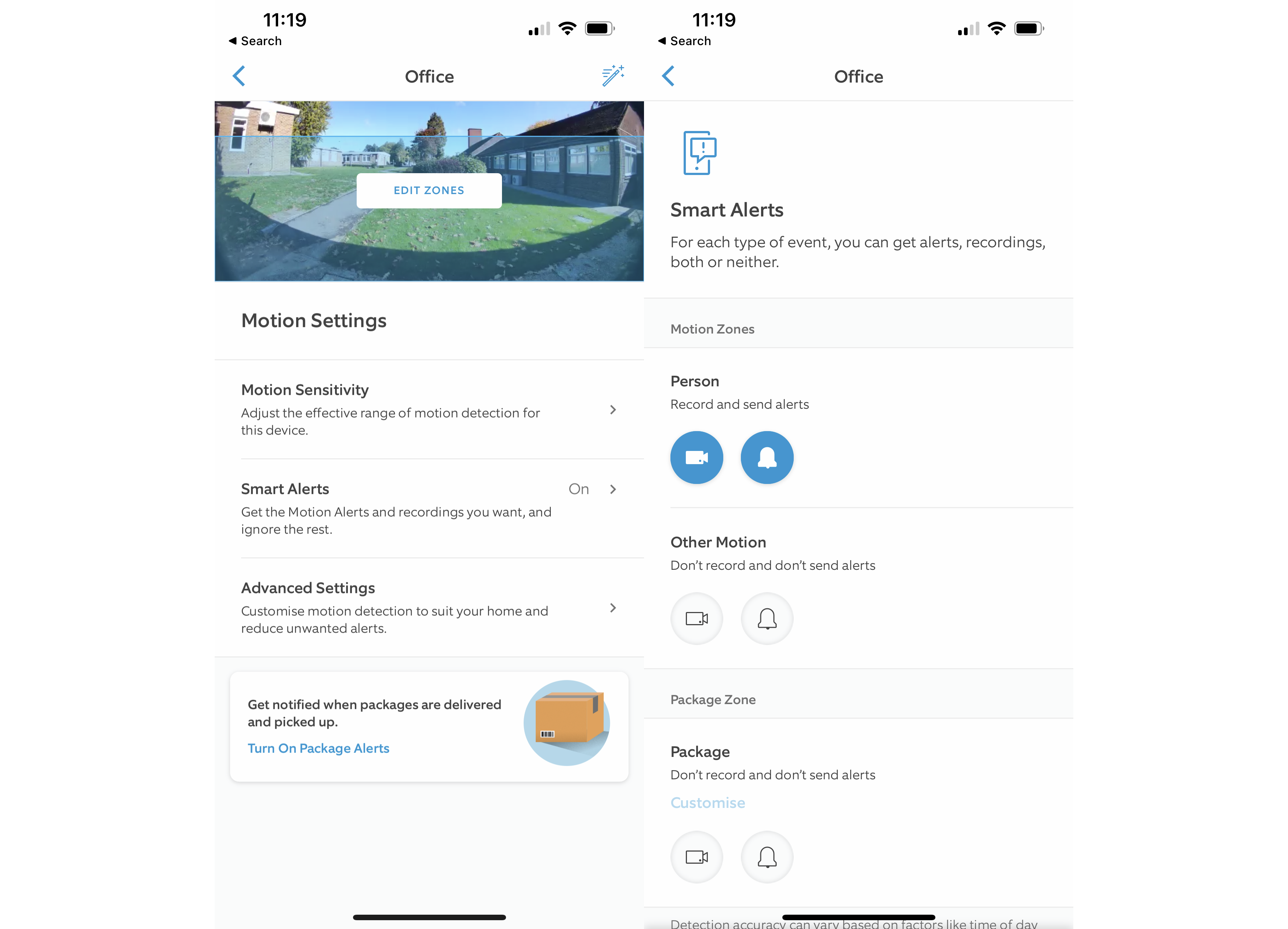
That’s far superior to the doorbell’s standard motion detection, which pings an alert whenever any motion is picked up.
In addition, the Ring Video Doorbell 2nd Gen supports activity zones, where you draw a box on the screen and only motion inside the box is counted as an alert. Using a combination of zones and people-only mode, I found that I could cut down the number of alerts I was getting to a sensible amount.
As the doorbell uses a PIR motion sensor, I found that I still had more alerts than when using the Ring Video Doorbell Pro 2, which has radar-based motion detection.
The main way the Ring Video Doorbell 2nd Gen will be used is when a caller comes to the door. Notifications that the doorbell has been pressed are sent to your phone, although only as a ‘ping’, so you must listen carefully.
There is the Smart Responses option, where you can choose from a list of pre-recorded messages, such as ‘We can’t answer the door right now’. Your chosen message is played after a set period (default is 10 seconds), prompting the visitor to leave a voice message.
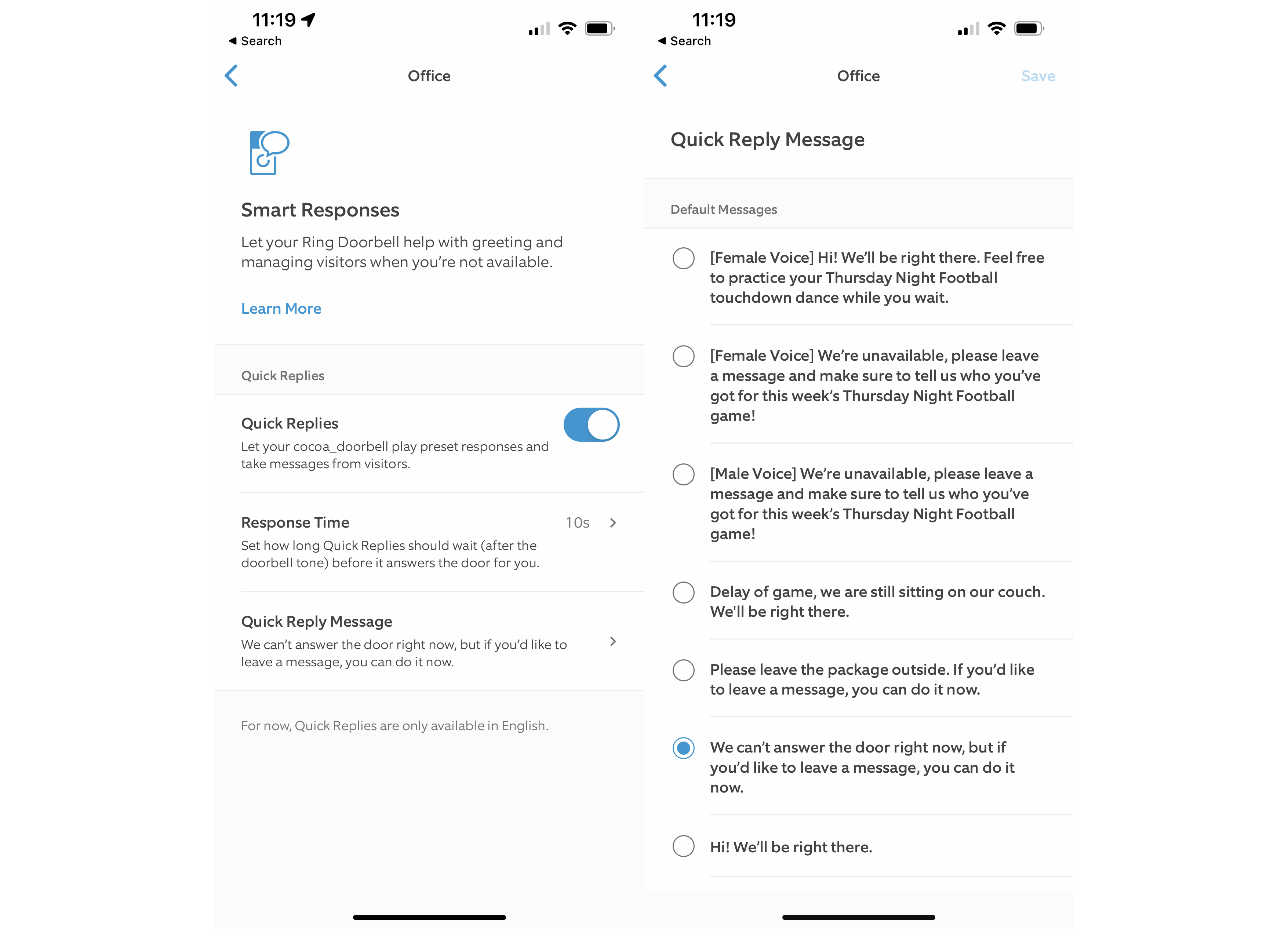
If you do answer the door, you get the live video stream on your phone and can answer with two-way talk. I found the microphone and speaker on the Ring Video Doorbell 2nd Gen perfectly good for the task at hand.
Internally, the doorbell will sound any wired chimes, any Ring wireless chimes and, if you’ve linked Ring to Alexa, any Echo smart speakers you have in the house. If you have a smart display, such as the Echo Show 10, an incoming call will display the live video feed on the screen, and let you answer the doorbell, too.
Samsung SmartThings and IFTTT support are there, too, so you can use the doorbell’s motion sensor to trigger events, such as turning on a light.
All video clips are saved to the cloud. Getting at them still isn’t as easy as it should be. Tap the thumbnail view and you can scroll through recordings in the timeline, which can be filtered by date and event time. While this view is handy for scrolling through recent events, trying to find something older can be painfully slow.
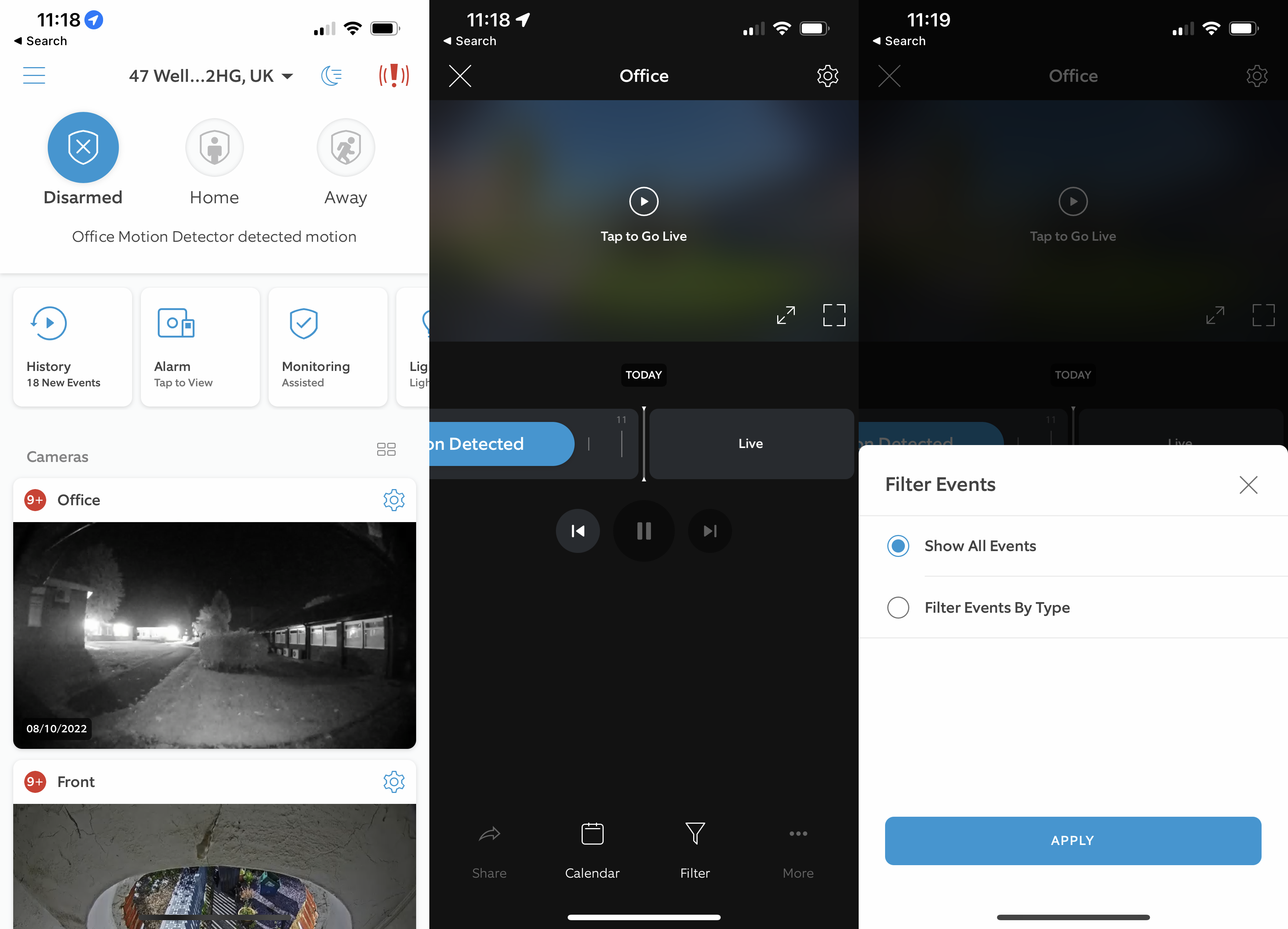
There is the Event History tab, which simply lists all events. Again this is filterable by date and event type, but without thumbnails trying to find one clip can take a while. It’s about time Ring just added a simple history page that shows events with thumbnails. When you do find the clip you want, the video can be downloaded to your phone.
Performance
- Night video is soft
- Daytime video is good enough
The Ring Video Doorbell 2nd Gen has a 155-degree wide lens and a 1080p video sensor. This puts it in the same league as the majority of Ring’s other products, bar the Pro model, which has a higher resolution.
Resolution is one thing, but it’s the quality of the video that counts. I found that the Ring Video Doorbell 2nd Gen lags behind its siblings a little. During the day, footage can look a little soft, and I found that the camera struggled more with strong sunlight than other models in the range. Overall, the footage is good enough, particularly for talking to people at your front door, but there are better-quality security cameras.
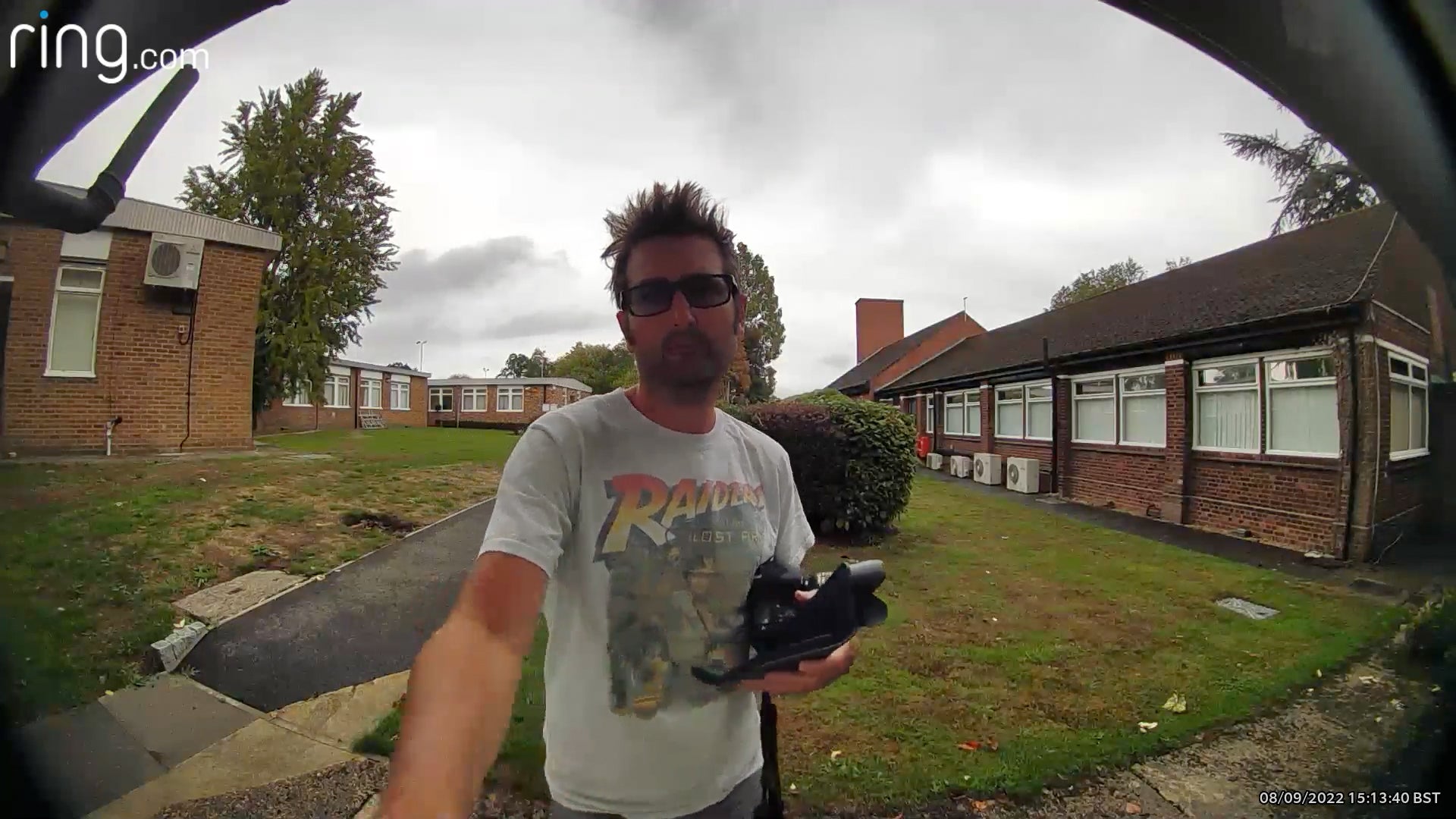
At night, the camera can shoot in full colour if there’s enough ambient light, although the detail rapidly goes and I found that lights in the distance obscured details.
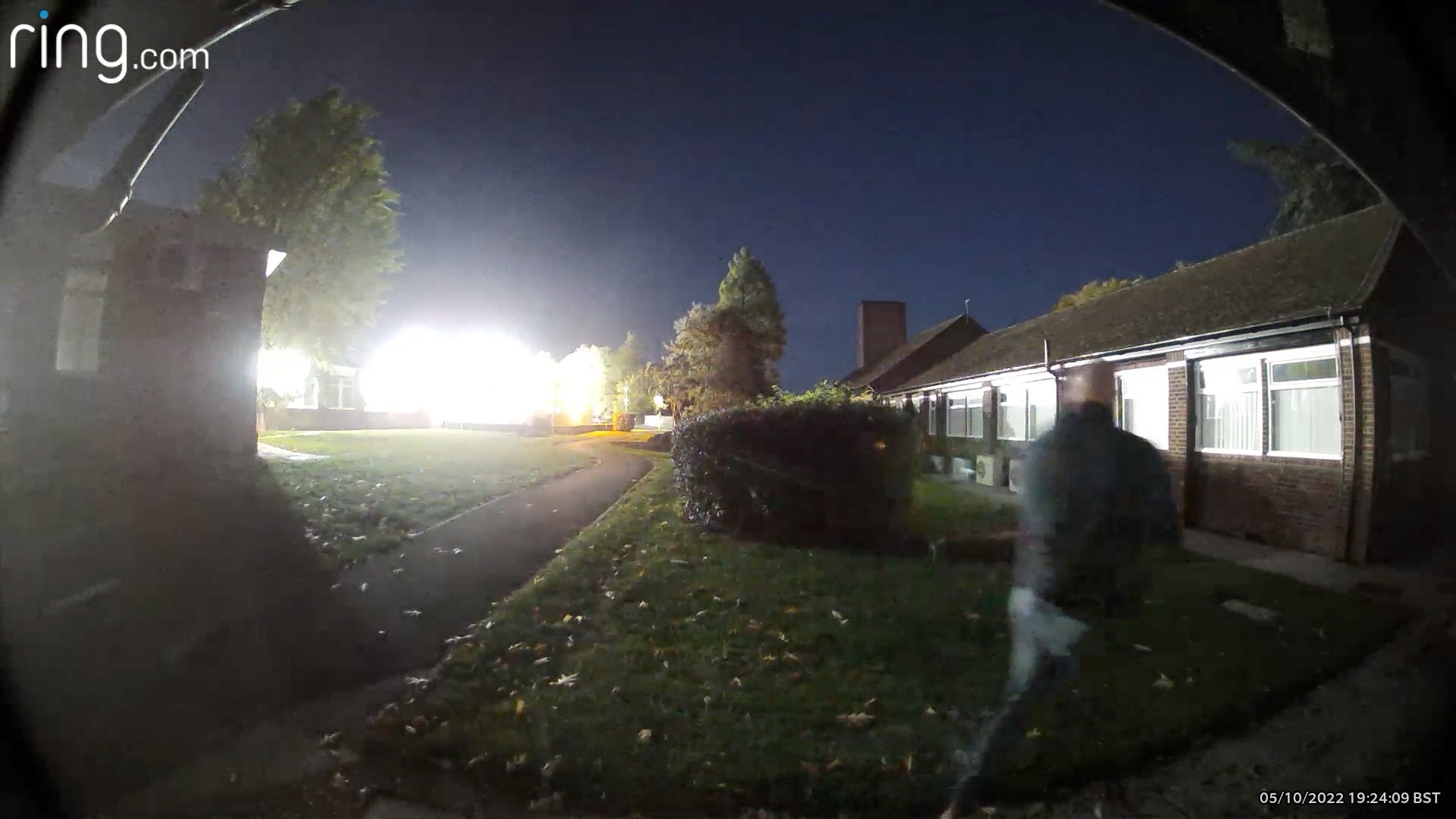
When it’s fully dark, the doorbell switches to IR, lighting up the night in black and white. Video gets even softer, and people walking past in the distance were blurred to the point where it was hard to see any real detail. For people calling at your door, you can see them well enough, but this product isn’t much cop as a security camera.
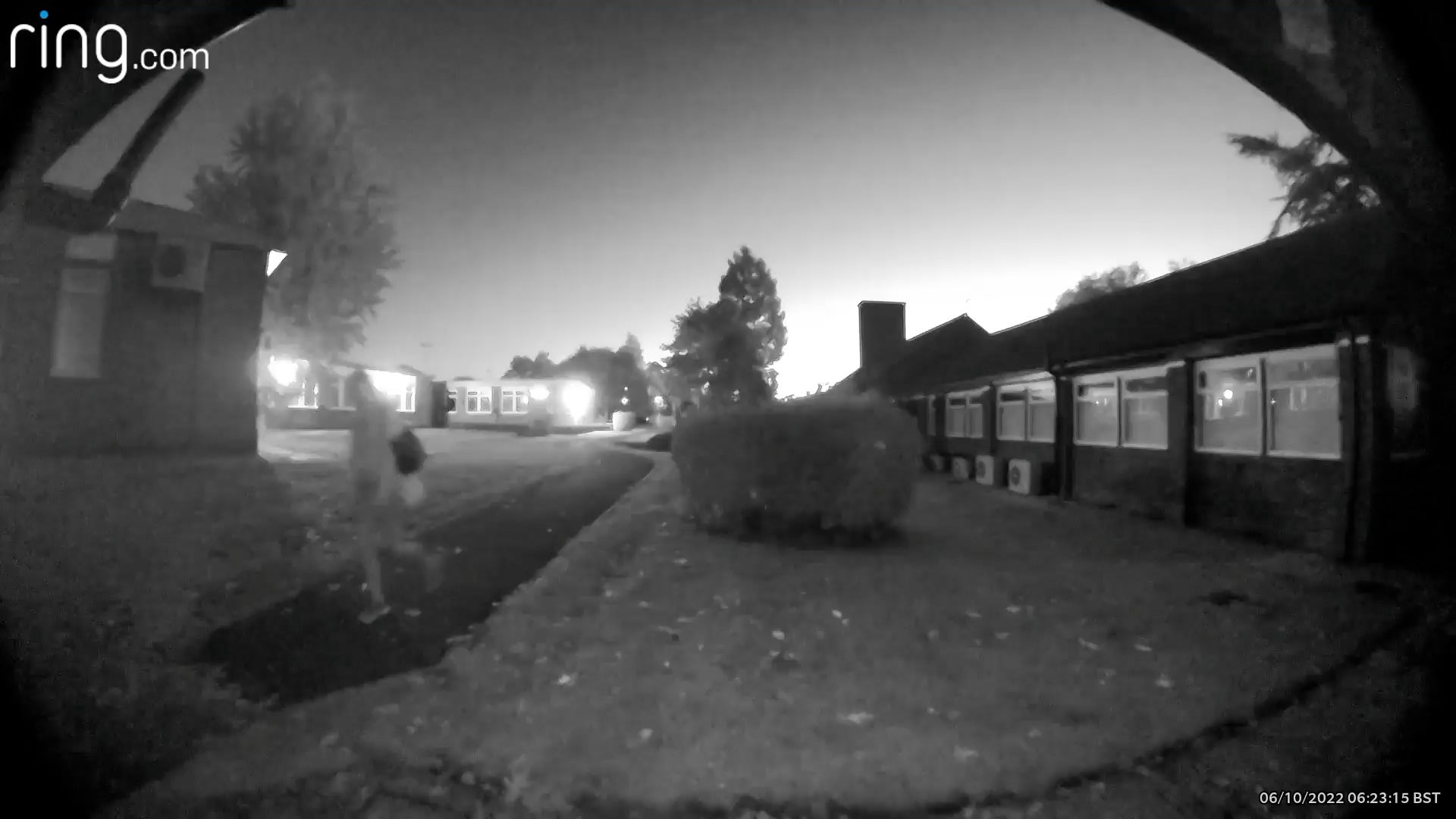
Latest deals
Should you buy it?
If you want a fully featured video doorbell without the cost of a premium model, this one is a great choice.
Video quality is basic and there’s no offline recording, so go for an alternative if you want razer-sharp footage.
Final Thoughts
Looking at the competition, most other video doorbells are more expensive, making the Ring Video Doorbell 2nd Gen hard to place. If you want to avoid monthly fees, then the Eufy Video Doorbell 2K may be a better choice or the Blink Video Doorbell with Sync Module, with both offering offline recording. If you want the best video quality, then you have to spend more on the Ring Video Doorbell Pro 2 or Ring Video Doorbell 4.
If you’re not so bothered about the security camera aspects, and just want a smart doorbell for dealing with callers, then the Ring Video Doorbell 2nd Gen is hard to beat. Its video quality is good enough and the price is hard to argue against, particularly as that includes a rechargeable battery and integration with Ring. For alternatives, see my guide to the best video doorbells.
How we test
Unlike other sites, we test every security camera we review thoroughly over an extended period of time. We use industry standard tests to compare features properly. We’ll always tell you what we find. We never, ever, accept money to review a product.
Find out more about how we test in our ethics policy.
Used as our main security camera for the review period
We test compatibility with the main smart systems (HomeKit, Alexa, Google Assistant, SmartThings, IFTTT and more) to see how easy each camera is to automate.
We take samples during the day and night to see how clear each camera’s video is.
FAQs
Yes, but it’s integrated on this model. Other battery-powered Ring doorbells use the Quick Release Battery pack.
It works with Amazon Alexa, Samsung SmartThings and IFTTT.
UK RRP
Manufacturer
Size (Dimensions)
ASIN
Release Date
First Reviewed Date
Model Number
Resolution
Voice Assistant
Battery Length
Smart assistants
App Control
IFTTT
Camera Type
Mounting option
View Field
Recording option
Two-way audio
Night vision
Light
Motion detection
Activity zones
Object detection
Audio detection
Power source
Sustainability
TrustedReviews’ holds the fact that global warming is not a myth as a core value and will continuously endeavor to help protect our planet from harm in its business practices.
As part of this mission, whenever we review a product we send the company a series of questions to help us gauge and make transparent the impact the device has on the environment.
We currently haven’t received answers to the questions on this product, but will update this page the moment we do. You can see a detailed breakdown of the questions we ask and why in our sustainability info page.
Jargon buster
IFTTT
If This Then That (IFTTT) is a free web-based smart home platform that lets you create simple rules to automate your home.
Verdict
It doesn’t have the best video quality, particularly at night when everything starts to look quite soft. However, the Ring Video Doorbell 2nd Gen works brilliantly for dealing with callers and it integrates fully with Alexa and other Ring devices. If you just want a smart doorbell, so you can answer your doorbell from anywhere, the low price here makes this product hard to argue against.
Pros
- Great value
- Integrates with other Ring products
- Gets the basics right
-
TypeThis is a smart video doorbell with an integrated battery. -
Battery lifeAround six to 12 months on a charge, depending on how many notifications are triggered and how many people press the bell.
Introduction
The cheapest battery-powered doorbell in the line-up, the Ring Video Doorbell 2nd Gen is a great entry-level choice.
It sacrifices some of the main features of its more expensive siblings, including a removable battery pack, and video quality isn’t the best. For those on a budget, these are all reasonable sacrifices.
Design and installation
- No wedges in the box
- Fatter than the normal doorbells
- Works with a transformer and wired chimes
This battery-powered doorbell is a little different from the other Ring ones I’ve reviewed, such as the Ring Video Doorbell 4. While all of Ring’s previous models have used the Quick Release Battery Pack, the Ring Video Doorbell 2nd Gen uses an integrated battery.
That makes this doorbell a little wider than the other models and means that it has to be removed to be charged. That’s probably not much of an issue, as most people with a Quick Release compatible doorbell will only have one battery. In effect, in both circumstances the doorbell is out of action while charging.
The wider design may be cause for more concern, as the Ring Video Doorbell 2nd Gen may not fit as easily on a doorframe. There are no corner wedges in the box to make fitting easier, although these are available as extras.
Installation is straightforward. At its easiest, the doorbell can be charged, connected to Wi-Fi and then attached to the mounting bracket.

If you’ve already got a wired doorbell, then this model can be connected to the existing wires (8-24V transformers are supported).

There are two clear advantages to doing this. First, the doorbell’s battery is trickle charged, so you shouldn’t have to remove it. Secondly, if you’ve got a wired chime inside, the Ring doorbell will ring it. This is an increasingly rare feature with Ring doorbells, with many of the new generation not supporting wired chimes.
Features
- Integrates with Alexa
- People-only detection
- Basic motion control
As with all of Ring’s other devices, the Ring Video Doorbell 2nd Gen connects via the Ring app. If you don’t have a Ring Protect system, you’ll get alerts and can answer the doorbell, but video won’t be recorded.
To record video, you need to subscribe to Ring Protect. It’s worth doing, getting you a minimum of 30-days’ video history stored in the cloud. Plus, there’s the added advantage of smart detection, with the cloud service able to detect and warn you when a person is detected.

That’s far superior to the doorbell’s standard motion detection, which pings an alert whenever any motion is picked up.
In addition, the Ring Video Doorbell 2nd Gen supports activity zones, where you draw a box on the screen and only motion inside the box is counted as an alert. Using a combination of zones and people-only mode, I found that I could cut down the number of alerts I was getting to a sensible amount.
As the doorbell uses a PIR motion sensor, I found that I still had more alerts than when using the Ring Video Doorbell Pro 2, which has radar-based motion detection.
The main way the Ring Video Doorbell 2nd Gen will be used is when a caller comes to the door. Notifications that the doorbell has been pressed are sent to your phone, although only as a ‘ping’, so you must listen carefully.
There is the Smart Responses option, where you can choose from a list of pre-recorded messages, such as ‘We can’t answer the door right now’. Your chosen message is played after a set period (default is 10 seconds), prompting the visitor to leave a voice message.

If you do answer the door, you get the live video stream on your phone and can answer with two-way talk. I found the microphone and speaker on the Ring Video Doorbell 2nd Gen perfectly good for the task at hand.
Internally, the doorbell will sound any wired chimes, any Ring wireless chimes and, if you’ve linked Ring to Alexa, any Echo smart speakers you have in the house. If you have a smart display, such as the Echo Show 10, an incoming call will display the live video feed on the screen, and let you answer the doorbell, too.
Samsung SmartThings and IFTTT support are there, too, so you can use the doorbell’s motion sensor to trigger events, such as turning on a light.
All video clips are saved to the cloud. Getting at them still isn’t as easy as it should be. Tap the thumbnail view and you can scroll through recordings in the timeline, which can be filtered by date and event time. While this view is handy for scrolling through recent events, trying to find something older can be painfully slow.

There is the Event History tab, which simply lists all events. Again this is filterable by date and event type, but without thumbnails trying to find one clip can take a while. It’s about time Ring just added a simple history page that shows events with thumbnails. When you do find the clip you want, the video can be downloaded to your phone.
Performance
- Night video is soft
- Daytime video is good enough
The Ring Video Doorbell 2nd Gen has a 155-degree wide lens and a 1080p video sensor. This puts it in the same league as the majority of Ring’s other products, bar the Pro model, which has a higher resolution.
Resolution is one thing, but it’s the quality of the video that counts. I found that the Ring Video Doorbell 2nd Gen lags behind its siblings a little. During the day, footage can look a little soft, and I found that the camera struggled more with strong sunlight than other models in the range. Overall, the footage is good enough, particularly for talking to people at your front door, but there are better-quality security cameras.

At night, the camera can shoot in full colour if there’s enough ambient light, although the detail rapidly goes and I found that lights in the distance obscured details.

When it’s fully dark, the doorbell switches to IR, lighting up the night in black and white. Video gets even softer, and people walking past in the distance were blurred to the point where it was hard to see any real detail. For people calling at your door, you can see them well enough, but this product isn’t much cop as a security camera.

Latest deals
Should you buy it?
If you want a fully featured video doorbell without the cost of a premium model, this one is a great choice.
Video quality is basic and there’s no offline recording, so go for an alternative if you want razer-sharp footage.
Final Thoughts
Looking at the competition, most other video doorbells are more expensive, making the Ring Video Doorbell 2nd Gen hard to place. If you want to avoid monthly fees, then the Eufy Video Doorbell 2K may be a better choice or the Blink Video Doorbell with Sync Module, with both offering offline recording. If you want the best video quality, then you have to spend more on the Ring Video Doorbell Pro 2 or Ring Video Doorbell 4.
If you’re not so bothered about the security camera aspects, and just want a smart doorbell for dealing with callers, then the Ring Video Doorbell 2nd Gen is hard to beat. Its video quality is good enough and the price is hard to argue against, particularly as that includes a rechargeable battery and integration with Ring. For alternatives, see my guide to the best video doorbells.
How we test
Unlike other sites, we test every security camera we review thoroughly over an extended period of time. We use industry standard tests to compare features properly. We’ll always tell you what we find. We never, ever, accept money to review a product.
Find out more about how we test in our ethics policy.
Used as our main security camera for the review period
We test compatibility with the main smart systems (HomeKit, Alexa, Google Assistant, SmartThings, IFTTT and more) to see how easy each camera is to automate.
We take samples during the day and night to see how clear each camera’s video is.
FAQs
Yes, but it’s integrated on this model. Other battery-powered Ring doorbells use the Quick Release Battery pack.
It works with Amazon Alexa, Samsung SmartThings and IFTTT.
UK RRP
Manufacturer
Size (Dimensions)
ASIN
Release Date
First Reviewed Date
Model Number
Resolution
Voice Assistant
Battery Length
Smart assistants
App Control
IFTTT
Camera Type
Mounting option
View Field
Recording option
Two-way audio
Night vision
Light
Motion detection
Activity zones
Object detection
Audio detection
Power source
Sustainability
TrustedReviews’ holds the fact that global warming is not a myth as a core value and will continuously endeavor to help protect our planet from harm in its business practices.
As part of this mission, whenever we review a product we send the company a series of questions to help us gauge and make transparent the impact the device has on the environment.
We currently haven’t received answers to the questions on this product, but will update this page the moment we do. You can see a detailed breakdown of the questions we ask and why in our sustainability info page.
Jargon buster
IFTTT
If This Then That (IFTTT) is a free web-based smart home platform that lets you create simple rules to automate your home.


















